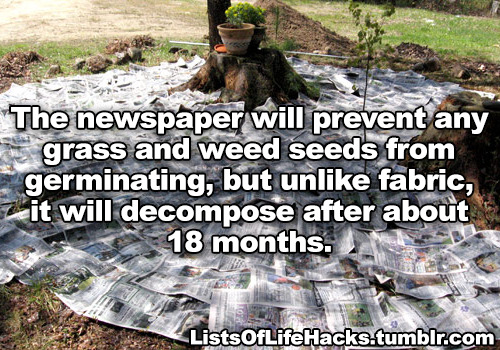The Myth That Panic, Looting, And Antisocial Behavior Increases During The Apocalypse (or Apocalyptic-like

The myth that panic, looting, and antisocial behavior increases during the apocalypse (or apocalyptic-like scenarios) is in fact a myth—and has been solidly disproved by multiple scientific studies. The National Earthquake Hazards Reduction Program, a research group within the United States Federal Emergency Management Administration (FEMA), has produced research that shows over and over again that “disaster victims are assisted first by others in the immediate vicinity and surrounding area and only later by official public safety personnel […] The spontaneous provision of assistance is facilitated by the fact that when crises occur, they take place in the context of ongoing community life and daily routines—that is, they affect not isolated individuals but rather people who are embedded in networks of social relationships.” (Facing Hazards and Disasters: Understanding Human Dimensions, National Academy of Sciences, 2006). Humans do not, under the pressure of an emergency, socially collapse. Rather, they seem to display higher levels of social cohesion, despite what media or government agents might expect…or portray on TV. Humans, after the apocalypse, band together in collectives to help one another—and they do this spontaneously. Disaster response workers call it ‘spontaneous prosocial helping behavior’, and it saves lives.
More Posts from Dragons-barb and Others

Goals
Wow...
Success is like pregnancy. Everybody congratulates you but nobody knows how many times you got fucked to achieve it.
Once I got over my moral objections and embraced the dark side, I found this to be very interesting and informative...kinda evil fun, too.
Source, please? I kinda want to read this book. XD

via
THIS!
REBLOG IF NAZIS OFFEND YOU MORE THAN NIPPLES.
Gotta remember these, if spring ever comes (mid-April and still snowing)










Genius Gardening Hacks
Black Holes: Seeing the Invisible!
Black holes are some of the most bizarre and fascinating objects in the cosmos. Astronomers want to study lots of them, but there’s one big problem – black holes are invisible! Since they don’t emit any light, it’s pretty tough to find them lurking in the inky void of space. Fortunately there are a few different ways we can “see” black holes indirectly by watching how they affect their surroundings.

Speedy stars
If you’ve spent some time stargazing, you know what a calm, peaceful place our universe can be. But did you know that a monster is hiding right in the heart of our Milky Way galaxy? Astronomers noticed stars zipping superfast around something we can’t see at the center of the galaxy, about 10 million miles per hour! The stars must be circling a supermassive black hole. No other object would have strong enough gravity to keep them from flying off into space.

Two astrophysicists won half of the Nobel Prize in Physics last year for revealing this dark secret. The black hole is truly monstrous, weighing about four million times as much as our Sun! And it seems our home galaxy is no exception – our Hubble Space Telescope has revealed that the hubs of most galaxies contain supermassive black holes.
Shadowy silhouettes
Technology has advanced enough that we’ve been able to spot one of these supermassive black holes in a nearby galaxy. In 2019, astronomers took the first-ever picture of a black hole in a galaxy called M87, which is about 55 million light-years away. They used an international network of radio telescopes called the Event Horizon Telescope.

In the image, we can see some light from hot gas surrounding a dark shape. While we still can’t see the black hole itself, we can see the “shadow” it casts on the bright backdrop.
Shattered stars
Black holes can come in a smaller variety, too. When a massive star runs out of the fuel it uses to shine, it collapses in on itself. These lightweight or “stellar-mass” black holes are only about 5-20 times as massive as the Sun. They’re scattered throughout the galaxy in the same places where we find stars, since that’s how they began their lives. Some of them started out with a companion star, and so far that’s been our best clue to find them.

Some black holes steal material from their companion star. As the material falls onto the black hole, it gets superhot and lights up in X-rays. The first confirmed black hole astronomers discovered, called Cygnus X-1, was found this way.
If a star comes too close to a supermassive black hole, the effect is even more dramatic! Instead of just siphoning material from the star like a smaller black hole would do, a supermassive black hole will completely tear the star apart into a stream of gas. This is called a tidal disruption event.
Making waves
But what if two companion stars both turn into black holes? They may eventually collide with each other to form a larger black hole, sending ripples through space-time – the fabric of the cosmos!

These ripples, called gravitational waves, travel across space at the speed of light. The waves that reach us are extremely weak because space-time is really stiff.
Three scientists received the 2017 Nobel Prize in Physics for using LIGO to observe gravitational waves that were sent out from colliding stellar-mass black holes. Though gravitational waves are hard to detect, they offer a way to find black holes without having to see any light.
We’re teaming up with the European Space Agency for a mission called LISA, which stands for Laser Interferometer Space Antenna. When it launches in the 2030s, it will detect gravitational waves from merging supermassive black holes – a likely sign of colliding galaxies!

Rogue black holes
So we have a few ways to find black holes by seeing stuff that’s close to them. But astronomers think there could be 100 million black holes roaming the galaxy solo. Fortunately, our Nancy Grace Roman Space Telescope will provide a way to “see” these isolated black holes, too.

Roman will find solitary black holes when they pass in front of more distant stars from our vantage point. The black hole’s gravity will warp the starlight in ways that reveal its presence. In some cases we can figure out a black hole’s mass and distance this way, and even estimate how fast it’s moving through the galaxy.
For more about black holes, check out these Tumblr posts!
⚫ Gobble Up These Black (Hole) Friday Deals!
⚫ Hubble’s 5 Weirdest Black Hole Discoveries
Make sure to follow us on Tumblr for your regular dose of space: http://nasa.tumblr.com.

Happy 103rd birthday, National Park Service! For more than a century, the passionate and dedicated people of the National Park Service have protected our country’s natural, cultural and historic treasures, ensuring current and future generations can experience and be inspired by these special places. Our love and respect for national parks runs deep and wide – just like the famous Grand Canyon National Park in Arizona. Sunrise photo courtesy of Brandon Erdman.
I feel that the mind-boggling enormity of this feat is underappreciated because the diameter of the black hole and its distance from us are such large, incomprehensible numbers. If my math is right, it's like standing on Earth and trying to photograph a single human hair on the moon... keeping in mind that both Earth and Moon are spinning and moving around while you try to do it. For me, that is the truly-amazing part: the technological achievement... not to mention the geopolitical achievement in getting all those countries to work together.
Also, take THAT flat-earthers!
Made me cry, but I'm so glad he made it out... there's hope.

Enderal | Catharsis
-
 alphabetsouppredictsyourdoom liked this · 2 weeks ago
alphabetsouppredictsyourdoom liked this · 2 weeks ago -
 blackcoffeedreamer liked this · 1 month ago
blackcoffeedreamer liked this · 1 month ago -
 chancellorcannoli reblogged this · 2 months ago
chancellorcannoli reblogged this · 2 months ago -
 corrodxdcoffin liked this · 8 months ago
corrodxdcoffin liked this · 8 months ago -
 honeyvanity reblogged this · 11 months ago
honeyvanity reblogged this · 11 months ago -
 radpachinko liked this · 1 year ago
radpachinko liked this · 1 year ago -
 greennnteaa liked this · 1 year ago
greennnteaa liked this · 1 year ago -
 tom-axler liked this · 1 year ago
tom-axler liked this · 1 year ago -
 vial00 liked this · 1 year ago
vial00 liked this · 1 year ago -
 acthere reblogged this · 1 year ago
acthere reblogged this · 1 year ago -
 enlistment reblogged this · 1 year ago
enlistment reblogged this · 1 year ago -
 annoyinglyvague liked this · 1 year ago
annoyinglyvague liked this · 1 year ago -
 red-signal reblogged this · 1 year ago
red-signal reblogged this · 1 year ago -
 red-signal liked this · 1 year ago
red-signal liked this · 1 year ago -
 longpersagesra liked this · 1 year ago
longpersagesra liked this · 1 year ago -
 fibersinthe liked this · 1 year ago
fibersinthe liked this · 1 year ago -
 the-rodent-gentleman liked this · 1 year ago
the-rodent-gentleman liked this · 1 year ago -
 lies418 liked this · 1 year ago
lies418 liked this · 1 year ago -
 ossifer liked this · 1 year ago
ossifer liked this · 1 year ago -
 black-iron-regalia liked this · 2 years ago
black-iron-regalia liked this · 2 years ago -
 hesitantheroine reblogged this · 2 years ago
hesitantheroine reblogged this · 2 years ago -
 belenosblack reblogged this · 2 years ago
belenosblack reblogged this · 2 years ago -
 harru10 reblogged this · 2 years ago
harru10 reblogged this · 2 years ago -
 teacup-universe reblogged this · 2 years ago
teacup-universe reblogged this · 2 years ago -
 teacup-universe liked this · 2 years ago
teacup-universe liked this · 2 years ago -
 wonderer125blog liked this · 2 years ago
wonderer125blog liked this · 2 years ago -
 lavenderpatches liked this · 2 years ago
lavenderpatches liked this · 2 years ago -
 kaasen reblogged this · 2 years ago
kaasen reblogged this · 2 years ago -
 coyoteemoji reblogged this · 2 years ago
coyoteemoji reblogged this · 2 years ago -
 daedricprincessorigin liked this · 2 years ago
daedricprincessorigin liked this · 2 years ago -
 lionesshathor reblogged this · 2 years ago
lionesshathor reblogged this · 2 years ago -
 skvaaader reblogged this · 2 years ago
skvaaader reblogged this · 2 years ago -
 gessorly reblogged this · 2 years ago
gessorly reblogged this · 2 years ago -
 deedeenyan liked this · 2 years ago
deedeenyan liked this · 2 years ago -
 starryoak liked this · 2 years ago
starryoak liked this · 2 years ago -
 talisman975 reblogged this · 2 years ago
talisman975 reblogged this · 2 years ago -
 talisman975 liked this · 2 years ago
talisman975 liked this · 2 years ago -
 lesbianswampgoblin reblogged this · 2 years ago
lesbianswampgoblin reblogged this · 2 years ago